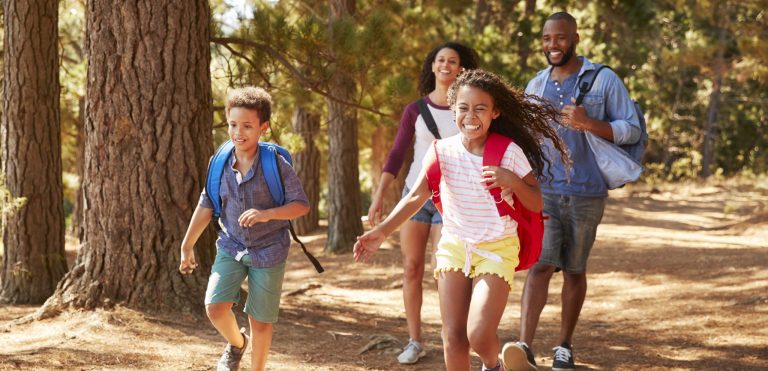If you've already made exercise your daily habit, you probably want the same for your kids too. Any movement that bring us from one place to another requires basic locomotor skills. That, obviously, is a necessity not only in workout routines, but in everyday life.
To define locomotor skills it is important to remember that it is any physical action that let the feet transfer the body from one point to the other. This includes many forms of walking and jumping, whether it's forwards, backwards, upwards, or sideways.
These skills are part of a natural physical development in young children as they learn their gross motor skills. By incorporating locomotor skill games into your daily activities you can help your child to accelerate his or her progress. You can also notice early on what movements the child is good at and where there are difficulties.
List of Locomotor Skills
1. Walking
The first one that a human child learns and that is used as an example for locomotor skills definition. Both or one of the feet is always on the ground.
2. Running
Moving rapidly on foot with one and sometimes both feet in the air.
3. Jumping
This involves propelling one's body up into the air and down with both feet in the air at first and both feet landing on the ground.
4. Hopping
Jumping on one foot.
5. Galloping
Running or moving quickly with one foot on the lead. One foot steps forward with a little spring followed by the transfer of body weight to the back foot.
6. Sliding
Moving smoothly along the surface with both feet in contact with it.
7. Leaping
Jumping forward or backward to a great height and with one leg outstretched towards the goal.
8. Marching
Organized, steady, and rhythmic walking forwards.
9. Skipping
Moving with steps and hops alternating each other.
Games To Help Developing Locomotor Skills
If your kid is attending kindergarten, a preschool, or even a primary school already, chances are that a big part of the program focuses on locomotion activity practice. Spending time with your child and having these tricks and games in mind will help him or her to get stronger, healthier, more flexible, and happier day after day.
Fun walks
Try to show your kid how to have fun while walking on your way to the park or to the grocery store. Start walking on tiptoe and then on your heels, stop to wheel around, slow down and then speed up abruptly, and so on. Just keep it simple and watch if your kid is enjoying it.
Run for your life
Many sport games involve running so it's easy to make this practice casual. Children run around constantly, but it's important to teach them to run with purpose and balance.
Use make-believe stories to encourage a child to run and save a toy from danger or play a barley-break. Don't miss the chance to play a short-distance race to your car, to the first building on the way, or to a bench. Running with obstacles on the playground is also a good idea.
Up and down
To improve jumping, hopping, leaping, and skipping movements jumping rope is your friend number one. It's also a great idea to create “rivers”, “electric walls”, and other such make-believe obstacles from toys, cards, and ribbons for a child to jump over. You can also play pretend games, moving through the room the way a frog, a horse, or a grasshopper would do.
Cowboy role play
For galloping movement skill development playing a pretend game is the best. Use a hula-hoop or a jumping rope to put it around your waist as if they're horse reins. Let the child hold it behind you. Start galloping through the “prairies” and let your kid follow your movements. Later, you can switch and become a rider yourself, seeing if the child does it well.
Robin Hood and the dragon
For sliding movement skills try to play this game. Be a “sleeping dragon” with his eyes closed and the treasure (pillows or toys) behind him. The child is “Robin Hood” who needs to sneak behind the dragon and steal the treasure without waking him up. Let the child slide slowly and take the treasure pieces one by one to a designated area.
Whenever the “dragon” sneezes, it means it soon will wake up and “Robin Hood” must speed up the sliding. Whenever the “dragon” wakes up, “Robin Hood” must freeze. The game is over when all the treasure is stolen.
Marching game
Marching involves rhythmic development, communal thinking, alertness, and discipline. To improve this skill, use masking tape to mark the path of your marching route. Cut a few different shapes out of paper and stick them with duck tape on the floor. Turn on some uplifting music that's easy to march along.
Lead the way and whenever you step on a certain symbol on the floor, make up a physical activity that a child must complete before resuming to marching. Make up different activities for different cut-out shapes and keep it fun! The game ends when the music stops.




